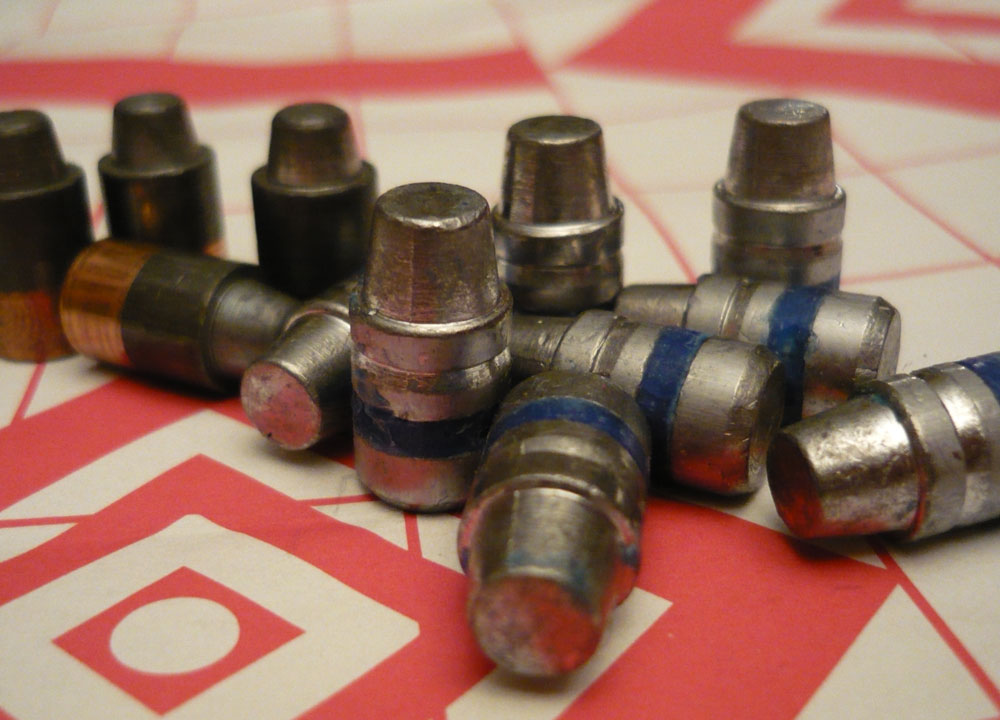At GunDigest, we independently review products. However, we may earn a commission when you purchase through links on our site. Learn More
Cast Lead Bullets, a Wonderfully Inexpensive Experience

There are few better ways to take reloading to the next level than casting your own bullets. And learning how to create your own projectiles has the added bonus of seeing you through tight ammo supplies.
From the time cartridges were invented in the 19th century, cast lead bullets were the projectile of choice. Many rifles and handguns were sold with an appropriate caliber bullet mould as part of the kit, so the shooter could have a ready supply of ammunition on hand.
Revolvers generally shot either round balls or round nosed bullets, while the rifleman had a wider choice of bullet shapes and weights. When copper jacketed projectiles hit the scene, in the late 1880s, they revolutionized the shooting world. They gave unprecedented penetration, fouled the bore much less than their lead counterparts, and were accepted as the projectile of the future.
However, there were those who still enjoyed the process of casting their own lead projectiles, whether due to financial constraints or old habits. The cast lead bullet, especially among handgunners and those who enjoy shooting the blackpowder cartridges that were developed early on, has never lost favor.
Whether greased, lubricated or paper patched, the cast lead projectile remains with us in the 21st century. And in the situation we shooters have faced since the beginning of 2013, that is a very good thing. I know trying to find certain ammunition, or even components, is damned near impossible. This is where the cast lead bullet can save the day.
The method of casting your own bullets is still viable. Lyman, Lee, RCBS and other companies make great bullet moulds that allow us reloaders to cast our own bullets.
Lead is generally soft, so adding some antimony (often found in wheel weights) can make your alloy harder. If you choose to melt some lead and roll your own, let me warn you that lead fumes can be very harmful. Be sure and melt your lead outdoors in a well ventilated area.
Get the mould good and hot before trying to pour lead into the cavity, to avoid “frosted” bullets. I still cast my own lead bullets and round balls for my .54 caliber muzzleloader, as well as .357 and .45 bullets for my handguns. They make a very economical choice, and casting bullets is a fun activity when there’s no open hunting season. I’d recommend a good electric melting pot, as trying to melt lead over an open fire can be pain.
There are companies who specialize in making cast bullets, and make some wonderful stuff. Meister Bullets and Falcon Bullet Company come to mind quickly. Good, consistent lead bullets can make for a great weekend spent with your favorite pistol. Falcon makes a .45 caliber 230 grain round nose that is perfect in the .45ACP. It feeds well and it’s accurate, and it’s much more affordable than the jacketed stuff. My .38 Special really likes the Falcon 158 grain semi-wadcutter, despite the 1 7/8” snub nose barrel.
Rifles, too, can benefit from cast lead bullets. The traditional “cowboy” era guns were designed for them. The .45/70, .38-55 Winchester, and .30/30 Winchester all perform very well with cast lead bullets. Their moderate velocities mate up very well with these projectiles.
Single shot black powder cartridges do as well. My .45/120 Sharps loves the Montana Bullet Works swaged 500 grain bullets. Huge clouds of sulphur smelling smoke and some hefty recoil makes for a fun afternoon!
Cowboy guns aside, there are good bullets to be made or purchased in any rifle caliber. I firmly believe every serious handloader should own one or more editions of the Lyman reloading manual. Having no particular allegiance to any brand of bullet, Lyman tests with a wide variety of projectiles, and this makes a valuable source of cross-sectional test data. More importantly, Lyman includes the loading data for cast bullets in every caliber capable of shooting them.
This gives the reloader the opportunity to not only create a good amount of practice ammunition, but he or she can create a reduced velocity load to help introduce new shooters to a centerfire rifle without the punishing recoil. You see, lead bullets cannot be pushed to the same velocities that copper jacketed bullets can, and that Lyman manual will give you the information needed to produce those cast lead loads that will perform well at lower velocities. These loads can be used for plinking, or for hunting in close range situations.
So, whether it may be your favorite pistol that needs feeding, or you’d like to spend some time at the shooting bench with a favorite rifle firing ammunition that is considerably cheaper to make, cast lead bullets can serve you well.
Next Step: Get your FREE Printable Target Pack
Enhance your shooting precision with our 62 MOA Targets, perfect for rifles and handguns. Crafted in collaboration with Storm Tactical for accuracy and versatility.
Subscribe to the Gun Digest email newsletter and get your downloadable target pack sent straight to your inbox. Stay updated with the latest firearms info in the industry.